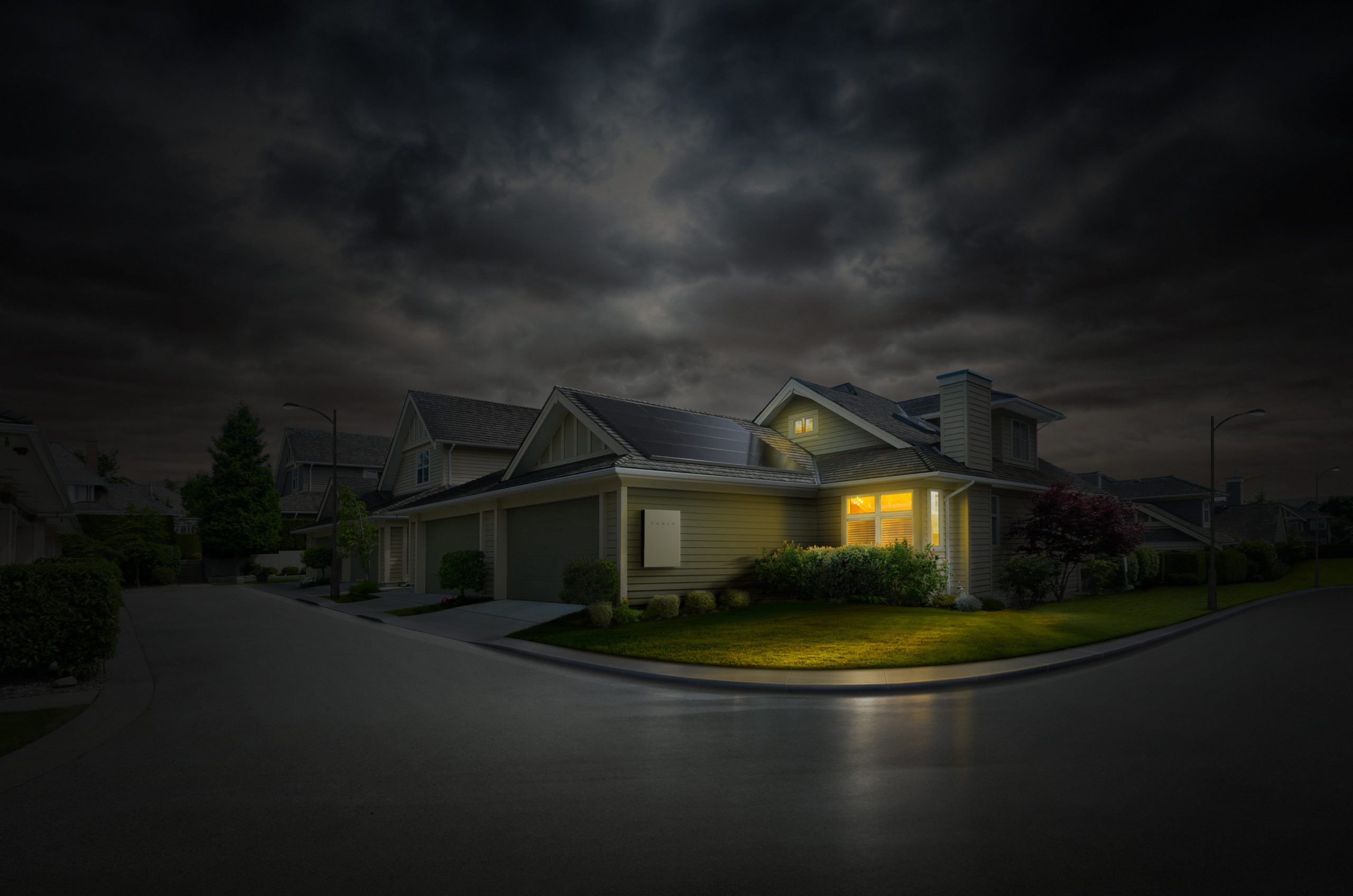

Energy
CA’s solar tax supporters are trying to run a “wealthy vs disadvantaged” narrative: It doesn’t have to be
A look at the California Public Utilities Commission’s (CPUC) ‘s 204-page proposal for its proposed new net metering rules (NEM 3.0), as well as the comments of the initiative’s supporters, shows something interesting. Supporters of NEM 3.0 are arguing that the current net metering rules, NEM 2.0, are practically an assault on disadvantaged households and a multi-billion subsidy for wealthy homeowners.
This narrative could be found all over the CPUC’s NEM 3.0 proposal. In the document, the commission argued that the existing net energy metering tariff “negatively impacts non-participating customers; is not cost-effective; and disproportionately harms low-income ratepayers” since homeowners without solar are being shouldered with the price of maintaining the grid. A study of the state’s policies further noted that California ratepayers spent about $3 billion a year to support net metering.
As critics of the initiative, such as Tesla and other renewable companies and organizations in the state, launched efforts to combat the NEM 3.0 proposal, organizations supporting the CPUC’s proposal have adopted a pretty similar stance. Affordable Clean Energy for All, a coalition of groups that include open NEM 3.0 backers like Pacific Gas & Electric, Southern California Edison, and San Diego Gas & Electric, has been particularly active in pushing the idea that NEM 2.0 takes from the disadvantaged and gives to the wealthy.
Kathy Fairbanks, a spokeswoman from Affordable Clean Energy for All, highlighted this recently. “It’s hypocritical that people who claim to want to help disadvantaged communities are advocating to keep a regressive policy that takes from the poor and gives to publicly-traded companies to fatten their profits, increase their stock price and shareholder wealth,” she said.
But inasmuch as a “rich vs. poor” concept is compelling, such a simplistic narrative hardly addresses the issues that critics are bringing up about NEM 3.0. While there is some argument in the idea that companies like Tesla are fighting the proposal since it is involved in the residential solar business, the fact remains that rooftop solar in California is growing fastest in working and middle-class neighborhoods. Not millionaires in their massive mansions — just regular working individuals that are learning the advantages and practicality of renewable energy.
Solar Rights Alliance Director Dave Rosenfeld mentioned this in a statement last month, as critics of NEM 3.0 delivered over more than 120,000 public comments to the California Public Utilities Commission (CPUC) and Governor Gavin Newsom. “This is where the rubber hits the road on blackouts, rising electricity bills, and air pollution. The correct path is to help millions more working and middle-class people get solar so we can keep up our progress and reject the utility profit grab that threatens to take us backwards,” Rosenfeld said.
Contrary to the idea that net metering takes from the disadvantaged and gives to the wealthy, an analysis by national grid modeling experts Vibrant Clean Energy has estimated that the continued growth of distributed energy resources (DER) such as rooftop, community solar, and energy storage, could actually save California ratepayers $120 billion over the next 30 years. “What our model finds is that when you account for the costs associated with distribution grid infrastructure, distributed energy resources can produce a pathway that is lower cost for all ratepayers and emits fewer greenhouse gas emissions,” Vibrant Clean Energy CEO Dr. Christopher Clack said.
While the CPUC seems very determined to ensure that NEM 3.0 is approved, the voices against the initiative are growing louder. Apart from Tesla CEO Elon Musk, who called the proposal “bizarre” and “anti-environment,” other notable personalities have expressed their criticism of NEM 3.0 online. These include, interestingly enough, two actors who played Marvel’s The Incredible Hulk on the big screen, Edward Norton and Mark Ruffalo, as well as basketball legend Bill Walton. California Governor Gavin Newsom also seems a bit more open-minded than the CPUC, noting that there’s more work to be done in the NEM 3.0 proposal.
“That draft plan that was recently released, I just had a chance to review, and I’ll say this about the plan: We still have some work to do… Do I think changes need to be made? Yes, I do,” Newsom recently said.
The California Public Utilities Commission may vote on its NEM 3.0 proposal as early as January 27, 2022.
Don’t hesitate to contact us with news tips. Just send a message to tips@teslarati.com to give us a heads up.

Cybertruck
Tesla updates Cybertruck owners about key Powershare feature

Tesla is updating Cybertruck owners on its timeline of a massive feature that has yet to ship: Powershare with Powerwall.
Powershare is a bidirectional charging feature exclusive to Cybertruck, which allows the vehicle’s battery to act as a portable power source for homes, appliances, tools, other EVs, and more. It was announced in late 2023 as part of Tesla’s push into vehicle-to-everything energy sharing, and acting as a giant portable charger is the main advantage, as it can provide backup power during outages.
Cybertruck’s Powershare system supports both vehicle-to-load (V2L) and vehicle-to-home (V2H), making it flexible and well-rounded for a variety of applications.
However, even though the feature was promised with Cybertruck, it has yet to be shipped to vehicles. Tesla communicated with owners through email recently regarding Powershare with Powerwall, which essentially has the pickup act as an extended battery.
Powerwall discharge would be prioritized before tapping into the truck’s larger pack.
However, Tesla is still working on getting the feature out to owners, an email said:
“We’re writing to let you know that the Powershare with Powerwall feature is still in development and is now scheduled for release in mid-2026.
This new release date gives us additional time to design and test this feature, ensuring its ability to communicate and optimize energy sharing between your vehicle and many configurations and generations of Powerwall. We are also using this time to develop additional Powershare features that will help us continue to accelerate the world’s transition to sustainable energy.”
Owners have expressed some real disappointment in Tesla’s continuous delays in releasing the feature, as it was expected to be released by late 2024, but now has been pushed back several times to mid-2026, according to the email.
Foundation Series Cybertruck buyers paid extra, expecting the feature to be rolled out with their vehicle upon pickup.
Cybertruck’s Lead Engineer, Wes Morrill, even commented on the holdup:
As a Cybertruck owner who also has Powerwall, I empathize with the disappointed comments.
To their credit, the team has delivered powershare functionality to Cybertruck customers who otherwise have no backup with development of the powershare gateway. As well as those with solar…
— Wes (@wmorrill3) December 12, 2025
He said that “it turned out to be much harder than anticipated to make powershare work seamlessly with existing Powerwalls through existing wall connectors. Two grid-forming devices need to negotiate who will form and who will follow, depending on the state of charge of each, and they need to do this without a network and through multiple generations of hardware, and test and validate this process through rigorous certifications to ensure grid safety.”
It’s nice to see the transparency, but it is justified for some Cybertruck owners to feel like they’ve been bait-and-switched.
Energy
Tesla starts hiring efforts for Texas Megafactory
Tesla’s Brookshire site is expected to produce 10,000 Megapacks annually, equal to 40 gigawatt hours of energy storage.

Tesla has officially begun hiring for its new $200 million Megafactory in Brookshire, Texas, a manufacturing hub expected to employ 1,500 people by 2028. The facility, which will build Tesla’s grid-scale Megapack batteries, is part of the company’s growing energy storage footprint.
Tesla’s hiring efforts for the Texas Megafactory are hinted at by the job openings currently active on the company’s Careers website.
Tesla’s Texas Megafactory
Tesla’s Brookshire site is expected to produce 10,000 Megapacks annually, equal to 40 gigawatt hours of energy storage, similar to the Lathrop Megafactory in California. Tesla’s Careers website currently lists over 30 job openings for the site, from engineers, welders, and project managers. Each of the openings is listed for Brookshire, Texas.
The company has leased two buildings in Empire West Business Park, with over $194 million in combined property and equipment investment. Tesla’s agreement with Waller County includes a 60% property tax abatement, contingent on meeting employment benchmarks: 375 jobs by 2026, 750 by 2027, and 1,500 by 2028, as noted in a report from the Houston Business Journal. Tesla is required to employ at least 1,500 workers in the facility through the rest of the 10-year abatement period.
Tesla’s clean energy boom
City officials have stated that Tesla’s arrival marks a turning point for the Texas city, as it highlights a shift from logistics to advanced clean energy manufacturing. Ramiro Bautista from Brookshire’s economic development office, highlighted this in a comment to the Journal.
“(Tesla) has great-paying jobs. Not just that, but the advanced manufacturing (and) clean energy is coming to the area,” he said. “So it’s not just your normal logistics manufacturing. This is advanced manufacturing coming to this area, and this brings a different type of job and investment into the local economy.”
Energy
Tesla and Samsung SDI in talks over new US battery storage deal: report
The update was related by industry sources and initially reported by South Korean news outlets.

Recent reports have suggested that Tesla and Samsung SDI are in talks over a potential partnership to supply batteries for large-scale energy storage systems (ESS).
The update was related by industry sources and initially reported by South Korean news outlets.
ESS batteries to be built at Samsung’s Indiana plant
As noted in a report from Korea JoongAng Daily, the demand for energy storage systems has been growing rapidly in North America, thanks in no small part to the surge in AI investments across numerous companies. With this in mind, Tesla has reportedly approached Samsung SDI about a potential battery supply deal.
The deal is reportedly worth over 3 trillion Korean won (approximately $2.11 billion) and will span three years, according to The Korea Global Economic Daily. A battery supply deal with Samsung SDI could make sense for Tesla as the company already has a grid-scale battery, the Megapack, which is perfect for industrial use. Samsung SDI could simply supply cells for the EV maker.
Production of the batteries would reportedly take place at Samsung SDI’s joint venture factory with Stellantis in Indiana, which is currently under construction. Samsung SDI recently announced plans to use part of that plant’s EV lines to produce cells for ESS, with a targeted capacity of 30 GWh by the end of next year.
Tesla and Samsung’s partnership
At present, only a handful of manufacturers, including Korea’s LG Energy Solution, Samsung SDI, SK On, and Japan’s Panasonic, are capable of producing energy storage-scale batteries domestically in the United States. A Samsung SDI official issued a comment about the matter, stating, “Nothing has been finalized regarding cooperation with Tesla.”
The possible energy storage system deal adds another layer to Tesla’s growing collaboration with Samsung, which is already in line as a partner in the upcoming production of Tesla’s AI5 and AI6 chips. Early sample manufacturing of the AI6 is expected to begin in South Korea, with mass production slated for Samsung’s Texas-based Taylor foundry when it starts operations.
The AI6 chip will power Tesla’s next wave of high-volume projects, including the Optimus humanoid robot and the autonomous Cybercab service. Musk has called the partnership with Samsung a “real collaboration,” adding that he personally plans to “walk the line” at the Taylor facility to speed up progress.








